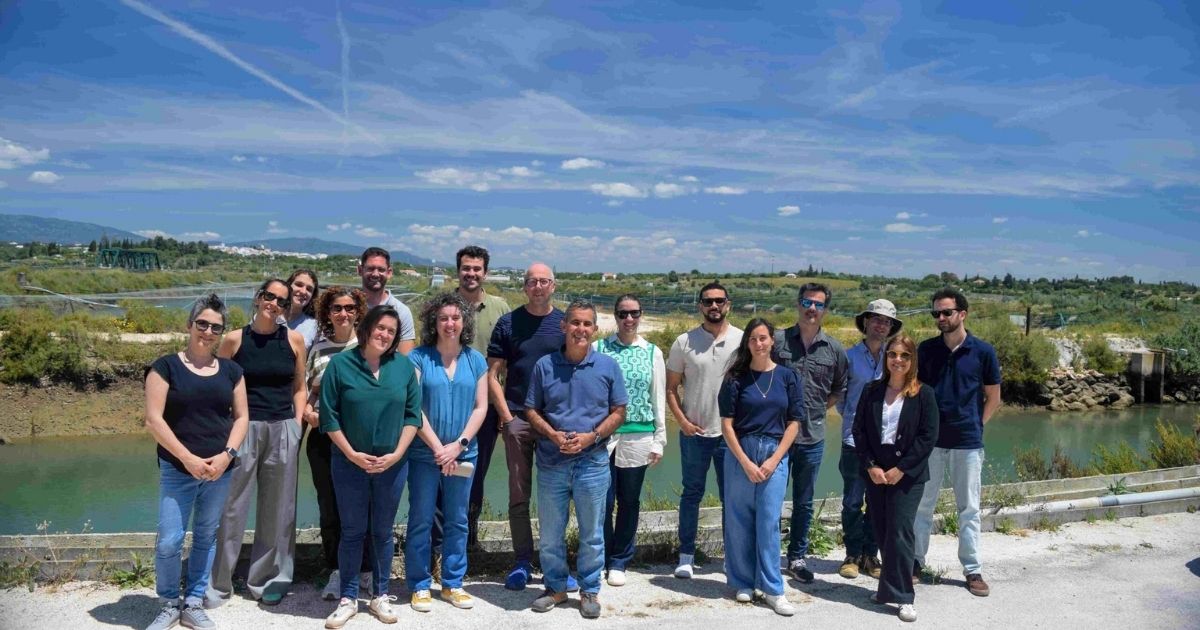MARE takes part in innovative sustainable aquaculture project
Producing sea bream, sea bass, macroalgae and sea cucumbers in a single aquaculture system is the main objective of Aquadiversify, a project that recently started up at the Pescalgarve - Piscicultura do Vale da Lama facilities in the Ria de Alvor. With an investment of around 1.5 million euros, this pioneering initiative aims to demonstrate that it is possible to produce more, with less environmental impact, in a circular and sustainable model.
This is the first time in Portugal that the integration of three trophic levels has been tested in the same pond: fish at the top (sea bream Sparus aurata and sea bass Dicentrarchus labrax), macroalgae in the water column and sea cucumbers (Holothuria arguinensis) at the bottom. The fish feed on algae-enriched feed, the macroalgae remove excess nutrients and sequester carbon dioxide, and the sea cucumbers treat the sediments by transforming accumulated organic matter into clean substrate.
“We hope to be able to develop a unique production model, in which several compatible species are produced in an integrated way, which enhance each other in terms of the quality of the end products, and which is more sustainable in ecological and economic terms for the promoting company,” says Ana Pombo, MARE's lead researcher on the project.
The project is a real living laboratory, anchored in a traditional aquaculture infrastructure, but with the ambition of testing innovative and replicable practices. “The main challenges are related to the integration of the various trophic levels in a real context, on a pilot scale, at the Vale da Lama fish farm,” explains Ana Pombo.
The macroalgae being studied include species such as Ulva spp., Gracilaria spp. and Saccharina latissima, which are widely recognized for their biofiltrating properties and potential for use in sectors such as human food, cosmetics and biofertilizers. Sea cucumbers will also be reproduced on a large scale, which could help recover a species of high economic value that is in sharp decline in wild populations.
MARE - Centro de Ciências do Mar e do Ambiente is participating through its units at the Polytechnic of Leiria (MARE-IPL) and the Faculty of Sciences of the University of Lisbon (MARE-ULisboa). In addition to Ana Pombo, the scientific team is made up of João Sousa, Pedro Santos, Sílvia Lourenço, Marta Neves, Teresa Mouga, Clélia Afonso, Pedro Félix and Francisco Azevedo e Silva.
“We are responsible for the production of juveniles, the optimization of larval development and multi-trophic trials,” says Pedro Félix. “We also participate in the final task of integrating different trophic levels in the same tank, under real production conditions, which makes this project especially challenging.”
The project is led by Pescalgarve and also includes the participation of GreenCoLab - Collaborative Laboratory for the Development of Green Ocean Technologies and Products and the University of the Algarve's Center for Marine Sciences (CCMAR). Over the next three years, the consortium will test, adjust and validate this new production model.
Aquadiversify is co-financed by the Innovation and Digital Transition Program - COMPETE 2030, by the regional programs Centro 2030 and Algarve 2030, and by the European Union.
